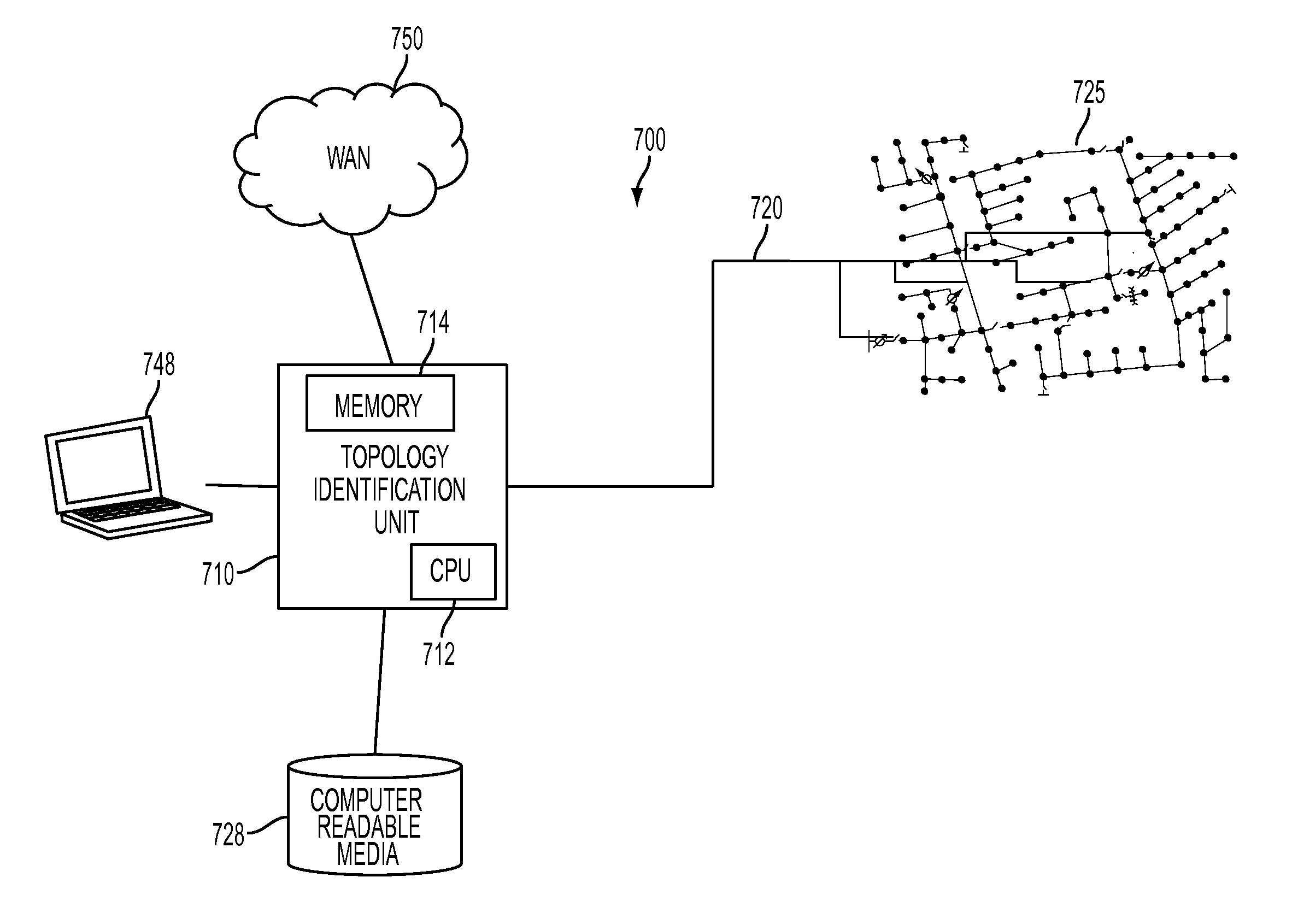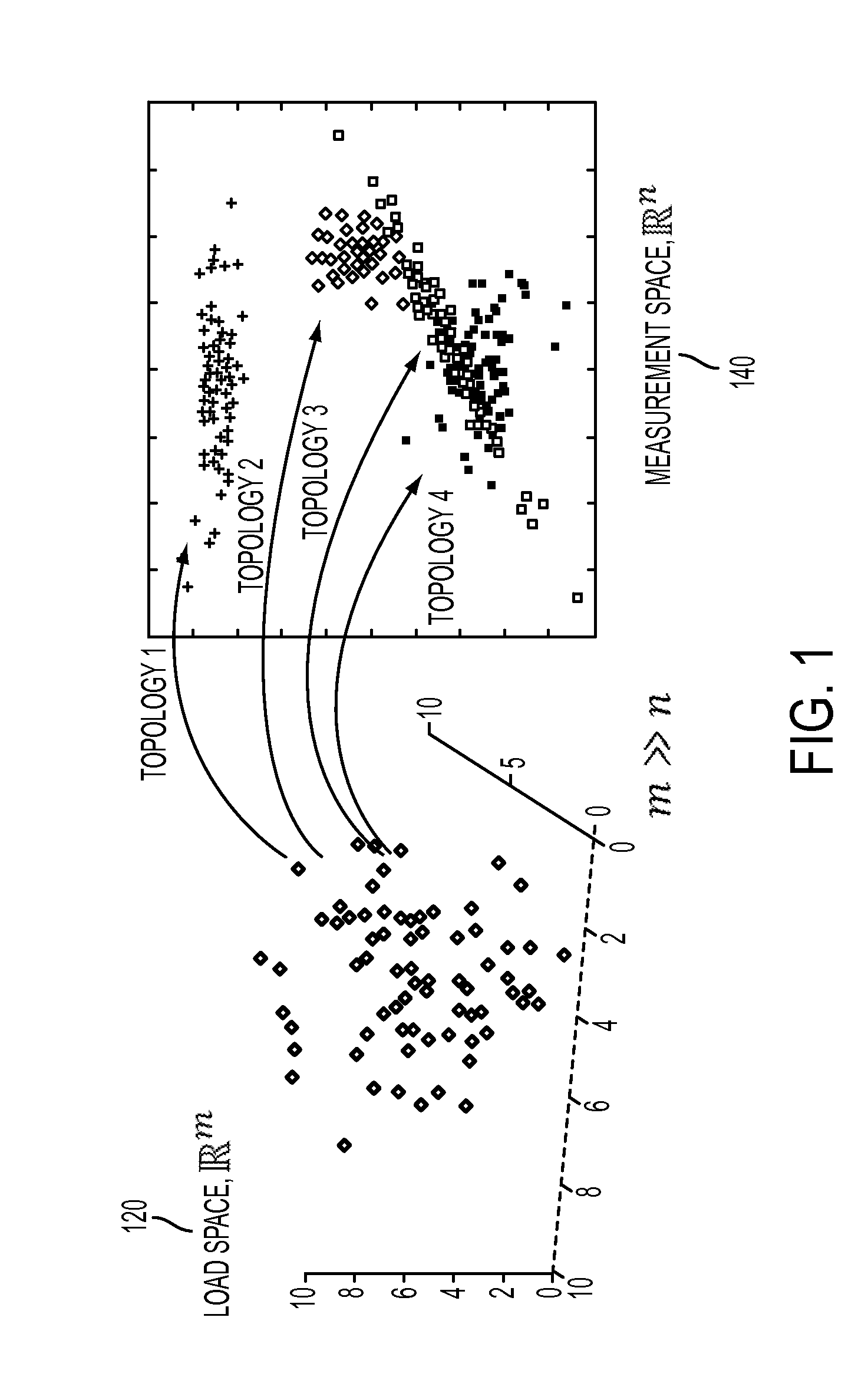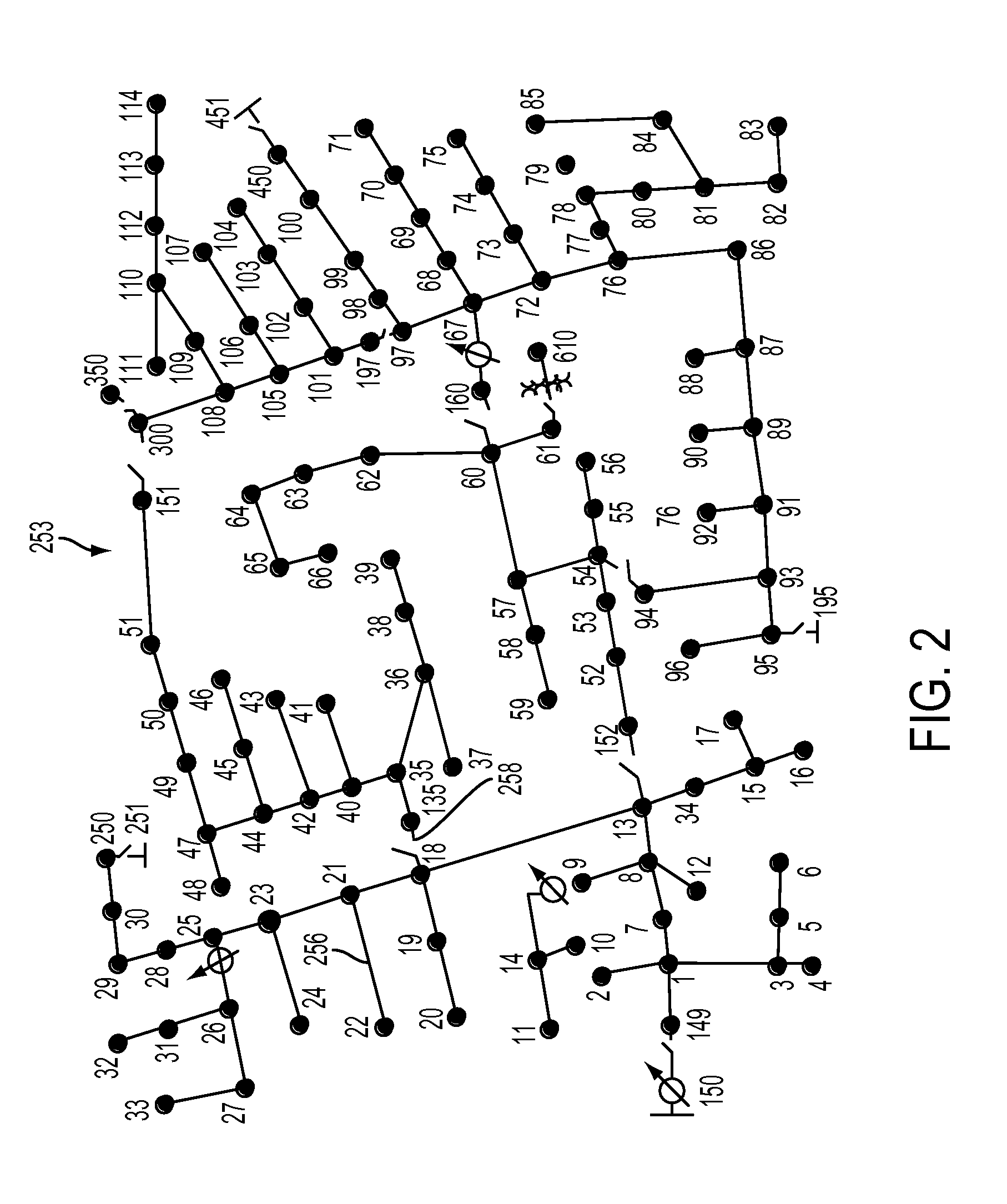Topology identification in distribution network with limited measurements
a distribution network and measurement technology, applied in stochastic cad, instruments, electric devices, etc., can solve the problems of loss of electric power supply, low measurement redundancy, and difficulty in distinguishing from actual analog measurement errors
- Summary
- Abstract
- Description
- Claims
- Application Information
AI Technical Summary
Benefits of technology
Problems solved by technology
Method used
Image
Examples
Embodiment Construction
[0016]In typical distribution systems, at least in the current state of low penetration of distributed energy sources and communication devices, estimating the network topology is generally more important than estimating the analog variables. That said, the tools for the detection of switching device status in transmission networks do not apply to distribution networks. As the main goal in transmission networks is full state estimation, there is already a redundancy of measurements to state variables in the range of 1.7 to 2.2 (redundancy factor).
[0017]Today's distribution networks, in contrast, may have only a few measurements, typically at the substations. While distribution networks normally have many more buses compared to transmission networks, they have relatively fewer switching devices. Equipping switching devices with a sensors would allow for immediate detection of the status while using fewer measurements than would be needed for state estimation. With the decrease in the...
PUM
 Login to View More
Login to View More Abstract
Description
Claims
Application Information
 Login to View More
Login to View More - R&D
- Intellectual Property
- Life Sciences
- Materials
- Tech Scout
- Unparalleled Data Quality
- Higher Quality Content
- 60% Fewer Hallucinations
Browse by: Latest US Patents, China's latest patents, Technical Efficacy Thesaurus, Application Domain, Technology Topic, Popular Technical Reports.
© 2025 PatSnap. All rights reserved.Legal|Privacy policy|Modern Slavery Act Transparency Statement|Sitemap|About US| Contact US: help@patsnap.com



